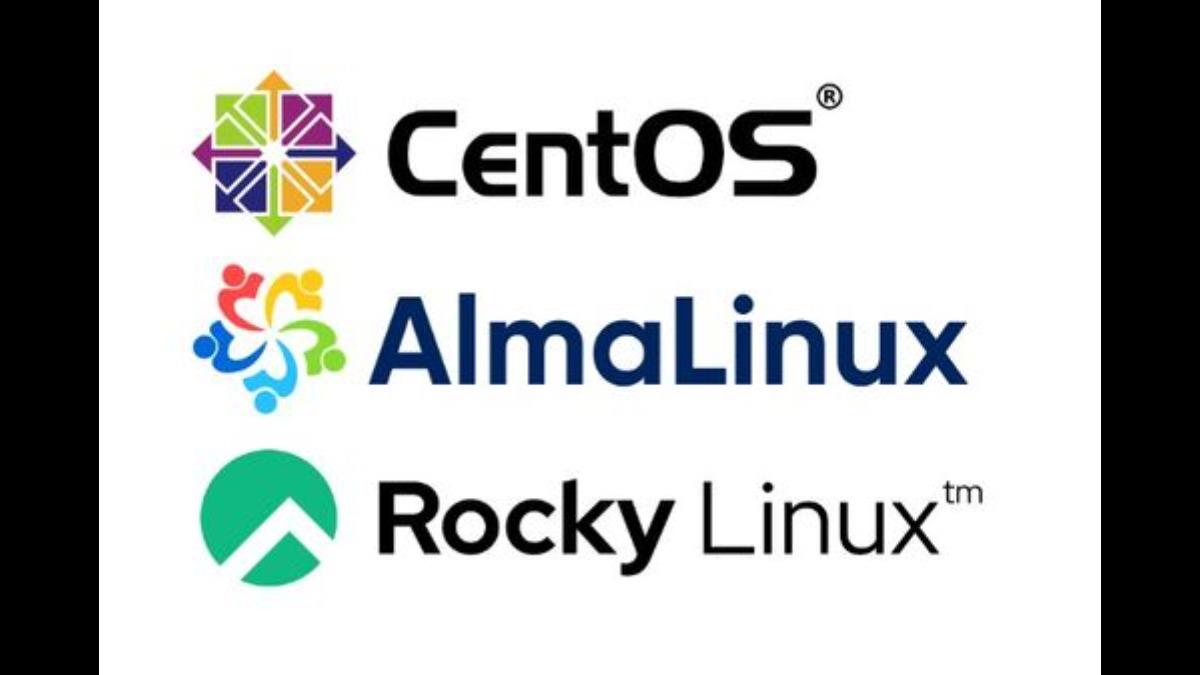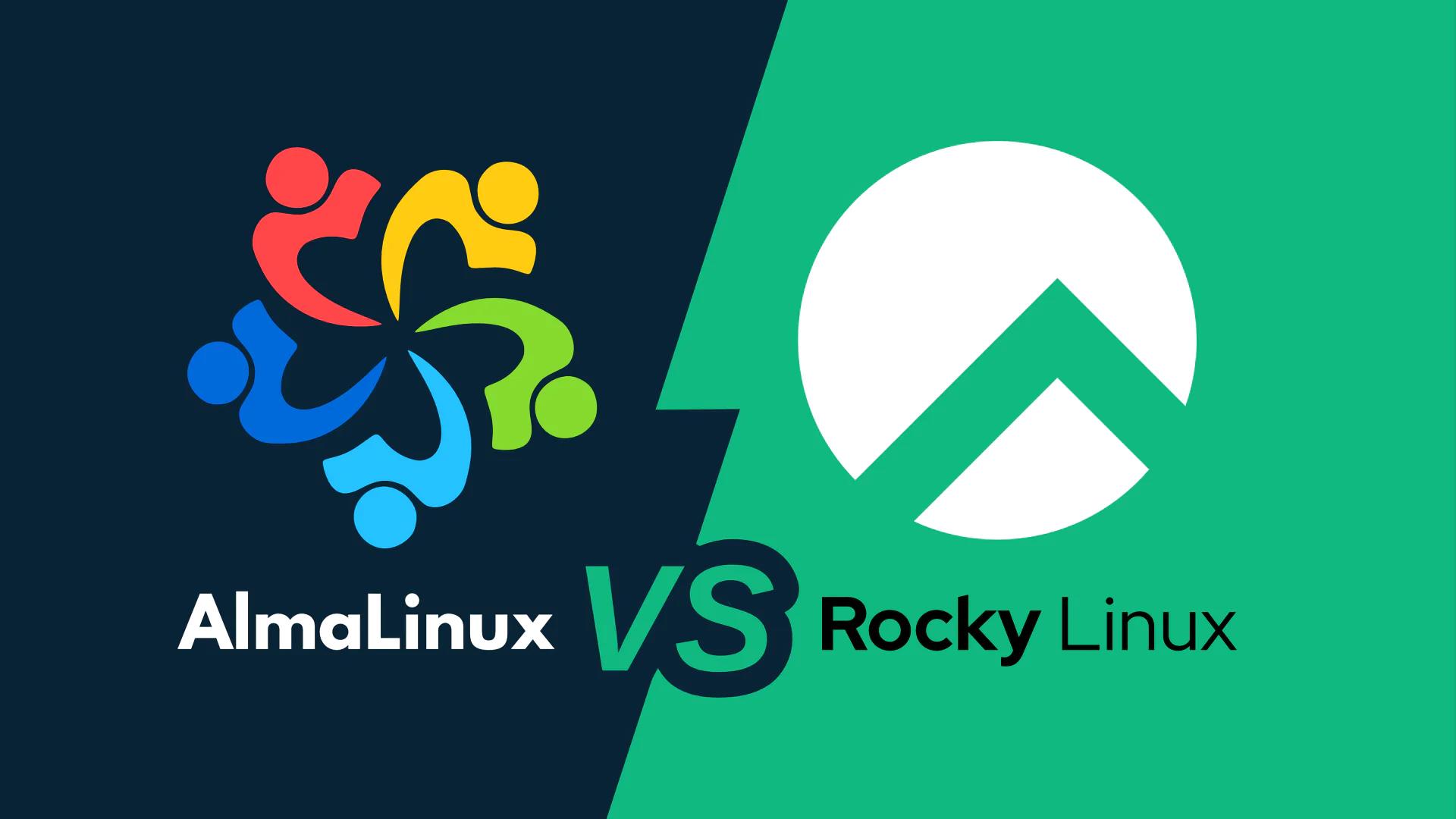AlmaLinux vs. Rocky Linux — Key Differences of the CentOS Successors
CentOS was a beloved Linux distribution among users who sought a free, stable, and reliable operating system. However, the discontinuation of CentOS 7 led to the rise of two new distributions: AlmaLinux and Rocky Linux. These successors aim to fill the gap left by CentOS, providing similar stability and functionality. This article delves into the key differences between AlmaLinux and Rocky Linux, helping you decide which one best fits your needs.
Contents
Introduction to CentOS and Its Legacy
CentOS, a free alternative to Red Hat Enterprise Linux (RHEL), quickly became popular for its robust performance, stability, and enterprise-grade features, making it a top choice for server environments. Its reliability, cost-effectiveness, and close alignment with RHEL attracted many users. However, in December 2020, Red Hat announced the end of CentOS as a stable release, shifting focus to CentOS Stream, marking the end of CentOS as users knew it. Despite this, CentOS’s open-source nature, regular security updates, and extensive community support have made it a preferred operating system for many.
The End of CentOS and the Need for Successors
The announcement of CentOS’s end of lifecycle shocked its user base. Red Hat revealed CentOS 7 would no longer receive updates and CentOS 8 would shift to CentOS Stream, a rolling-release distribution. This change did not meet the stability needs of many users, creating a void and a demand for new alternatives. The community’s reaction was swift and vocal, expressing frustration and disappointment, leading to the rapid development of AlmaLinux and Rocky Linux. Spearheaded by industry veterans, these new projects aimed to provide a seamless transition for CentOS users, ensuring robust support and resources. The rise and fall of CentOS created a significant gap, which AlmaLinux and Rocky Linux emerged to fill, each offering unique benefits while maintaining CentOS’s core values.
Introduction to AlmaLinux and Rocky Linux
AlmaLinux, developed by CloudLinux, is a free, open-source Linux distribution created to replace CentOS, offering a stable and secure platform with binary compatibility with Red Hat Enterprise Linux (RHEL). Rocky Linux, initiated by Gregory Kurtzer, the founder of CentOS, is another free, open-source distribution designed to fill the CentOS gap, also maintaining full compatibility with RHEL. Managed by the Rocky Enterprise Software Foundation, Rocky Linux focuses on providing a stable, predictable environment with strong community involvement and support. Both distributions aim to ensure a seamless transition for former CentOS users.

Background and Origins of AlmaLinux and Rocky Linux
AlmaLinux, founded by Igor Seletskiy, CEO of CloudLinux, was developed in response to CentOS’s discontinuation, backed by a $1 million annual investment. Its first stable release on March 30, 2021, provided a reliable, RHEL-compatible operating system. Rocky Linux, initiated by CentOS creator Gregory Kurtzer, was developed quickly after CentOS’s shift to CentOS Stream. Supported by investments from AWS, MontaVista, and Ctrl IQ, Rocky Linux released its first version on June 21, 2021, focusing on long-term support and stability, mirroring RHEL’s lifecycle.
Support and Community Engagement
AlmaLinux offers robust support through the AlmaLinux OS Foundation and partners like CloudLinux, providing technical assistance, security updates, and professional services. Its active community engages in forums, mailing lists, and social media, enhancing user support and knowledge sharing. Similarly, Rocky Linux, supported by the Rocky Enterprise Software Foundation and Ctrl IQ, ensures timely updates and technical assistance. Its engaged community contributes through forums and chat channels, fostering collaboration and support. Both distributions combine professional backing and vibrant communities, making them reliable choices for CentOS replacements.
Update and Release Cycles
AlmaLinux follows a predictable update strategy aligned with Red Hat Enterprise Linux (RHEL), ensuring users receive timely updates and security patches, and maintaining system stability and security. Similarly, Rocky Linux mirrors the RHEL update schedule, providing prompt updates and patches to address security vulnerabilities and deliver new features. Both distributions’ commitment to maintaining RHEL compatibility ensures their systems remain up-to-date, secure, and reliable for users.
Stability and Performance Comparison
AlmaLinux offers enterprise-level stability and performance, optimized for various environments, making it ideal for both small businesses and large enterprises. It handles server tasks robustly, ensuring efficient and reliable operation. Similarly, Rocky Linux delivers solid stability and performance, providing reliable operation in diverse environments from development to production servers. Its commitment to high reliability and uptime makes it a trusted choice for those seeking a dependable CentOS replacement. Both distributions ensure smooth, crash-free performance, appealing to users needing stable and efficient systems.
Ecosystem and Tooling
AlmaLinux and Rocky Linux both offer comprehensive tools for system management and development, ensuring a smooth transition from CentOS. They support numerous third-party applications, enhancing compatibility and ease of integration into existing infrastructures. This broad ecosystem makes AlmaLinux and Rocky Linux versatile and adaptable choices for various environments, from simple server management to complex enterprise setups.
Detailed Feature Comparison
AlmaLinux and Rocky Linux both prioritize security, providing regular updates to address vulnerabilities. They follow RHEL’s security schedule closely, ensuring timely patches. Both distributions are free, with AlmaLinux offering commercial support through CloudLinux and Rocky Linux through Ctrl IQ. They also have active developer communities that engage through forums, mailing lists, and social media, contributing to continuous improvements and reliability. The combination of robust security, free use, paid support options, and strong community involvement makes AlmaLinux and Rocky Linux flexible and dependable choices for users.

Personal Experiences with AlmaLinux and Rocky Linux
Installing both AlmaLinux and Rocky Linux is straightforward and user-friendly, similar to the CentOS process, making the transition easy for former CentOS users. AlmaLinux and Rocky Linux both excel in handling server tasks, providing reliable performance for applications ranging from web services to database management. Their stability and efficiency in various environments make them trusted choices for administrators. The familiar installation processes and robust server task performance highlight their suitability as versatile and reliable CentOS alternatives.
Final Verdict
● AlmaLinux for Enterprises
AlmaLinux is particularly well-suited for enterprise environments due to its strong commercial backing and professional support options. The operating system’s stability and regular updates ensure that enterprise systems remain secure and reliable. AlmaLinux’s compatibility with a wide range of tools and applications makes it easy to integrate into existing infrastructures. For businesses that require dependable support and a stable operating system, AlmaLinux is an excellent choice. Its enterprise-focused features and support options make it a valuable asset for organizations of all sizes.
● Rocky Linux for Personal Use
Rocky Linux is an ideal choice for personal use, especially for users who value community engagement and a stable, free operating system. Its strong ties to the CentOS legacy and the community-driven development approach make it appealing to many users. Rocky Linux provides reliable performance and stability, making it suitable for various personal projects and server tasks. For individuals who seek a robust and flexible operating system without the need for commercial support, Rocky Linux offers a perfect balance of features and community support.
Conclusion
In summary, AlmaLinux and Rocky Linux are strong successors to CentOS, both aligning closely with Red Hat Enterprise Linux (RHEL). AlmaLinux, backed by CloudLinux, offers robust commercial support and timely updates, ideal for enterprises. Rocky Linux, founded by the original CentOS creator, focuses on community-driven development and stability, suitable for personal and production use. The choice between them depends on whether you prioritize commercial support or community involvement. Both ensure a smooth transition from CentOS, providing reliable and secure environments.







